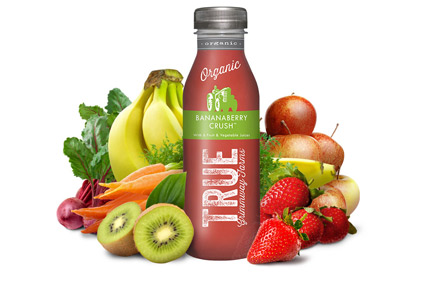Today's organic tent looks a lot different than yesterday's. It's bigger, younger, and significantly more diverse than just a few years ago. In fact, inside that tent, it looks pretty much like most places in America, a new study by the Organic Trade Association (OTA) shows.
As the availability of organic has become more mainstream and the offerings of organic more varied, there's more diversity in those choosing organic. There no longer is a typical organic consumer. Organic is meeting the needs of a wide and multi-faceted culture, and the faces of organic-buying families now mirror the demographics of the U.S. population in terms of ethnic background, according to OTA's U.S. Families' Organic Attitudes and Beliefs 2015 Tracking Study, a survey of more than 1,200 households throughout the country.
Today, seven in ten families who purchase organic describe themselves as "white," after hovering consistently around eight in ten from the survey's first year in 2009 through 2013. In contrast, African American and Hispanic families have been steadily increasing among the ranks of organic-buying households. The percentage of African American families buying organic on a regular basis has doubled from just 7 percent six years ago, to now 14 percent. Hispanic households choosing organic is even higher at 16 percent, a huge jump from 7 percent just four years ago, when the survey started tracking Hispanic buying patterns.
"Our survey shows that organic has turned a corner," said Laura Batcha, OTA's executive director and CEO. "Organic hasn't been a niche for some time, and today it is the face of America. The demographics of the organic consumer are not any different than the demographics of America." A side-by-side comparison of the figures: Percentage of organic buyers who are white: 73 percent; percentage of the U.S. population that is white, according to the latest U.S. Census: 72.4 percent; percentage of Hispanic organic buyers: 16 percent; percentage of U.S. population that's Hispanic: 16.4 percent; and percentage of African American organic buyers: 14 percent; percentage of U.S. population: 12.6 percent.
The OTA survey also looks at the incomes, education and ages of organic buyers, and compares the buying habits of the new organic purchaser to the more experienced organic consumer.
Like most of us who buy the bulk of our food from our local supermarket, organic shoppers generally also are turning to the convenient supermarket for their organic purchases. A whopping 78 percent of organic buyers say they typically buy their organic foods at conventional food stores/supermarkets. Over half also shop organic at the "big box" stores, an increase of almost 10 percentage points from just a year ago, and some 30 percent also report that it's not unusual to buy organic at one of the warehouse clubs in the country, again up almost 10 points from the previous year.
The similarities don't end there. Forty-three percent of the parents surveyed said they're making more of an effort to use coupons, discounts and other money-saving tactics when making general food purchases, very close to the 36 percent watching their budget when buying organic. Choosing store brands, either conventional or organic, to save money has become popular among penny-pinching families. Nine in ten families says they are choosing store brand products rather than brand names for conventional products, and eight in ten say they choose store brand organic items over organic brand names.
This was the sixth year OTA has partnered with KIWI Magazine to conduct the study. The primary objectives of the tracking study are to identify any changes in the degree to which families are incorporating organic into their lifestyle, parents' knowledge about organic products and benefits, the importance and use of labels when shopping for and choosing organic products, and the household shopping budget and retail channel preferences. This year the study looked more closely at the importance of the private label, digging down into the various factors that go into play when making the decision to buy the store brand private label over the more well-known brand label.
